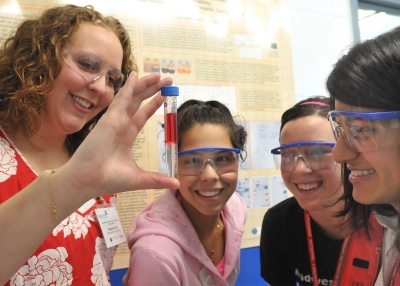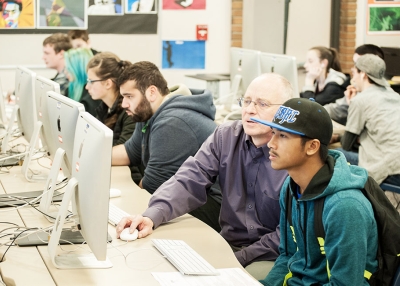Global CTE Classroom Projects
Global CTE Toolkit

Below are links to sample CTE classroom projects as well as tips on how to create your own classroom activities to help students become career ready in a global economy. This page includes:
- Sample Projects Organized by Theme
- Sample Projects Organized by UN Sustainable Development Goals
- Embedding Global STEM Projects into a CTE Instructional Sequence
- How to Facilitate a Project: Do's and Don'ts
- HQPBL Framework and Example Projects
- Additional Projects and Ideas
- Project Planning Template
- Differentiation Resources
Embedding Global STEM Projects into a CTE Instructional Sequence
How does a global project fit into my instructional plan? It's not as difficult as you think—here are the steps to help you get started:
- Step 1: Align the global project to CTE standards and career-ready practices.
- Connect project-based learning scenarios to the established standards and competencies for your specific course.
- Need help? Look at the crosswalks of global competence to common standards for each of the 16 career pathways.
- Step 2: Design the global project to be student led.
- Students take the lead in their learning. Here, they research an issue and propose solutions. Your role is to facilitate the learning.
- Need help? Review the SAGE method of project development.
- Step 3: Adapt and adjust your global project for your situation.
- You can adjust the pace of the project to fit your instructional plan and program.
- Need ideas? Review global CTE projects and their modifications in this toolkit.
- Step 4: Include differentiation in your global project.
- Adjust student products to align to, and account for, specific student requirements.
- Need ideas? Review global CTE projects and their ideas for differentiation in this toolkit.
Want to learn how to get started with integrating global content into your CTE program? Take Module 1: Global Career Readiness – A New Imperative, a short 15-minute online professional development module that is part of the Career Readiness in a Global Economy: STEM and CTE program. The module is available free of charge with registration.
How to Facilitate a Global Project: Do's and Don'ts
When using a project-centric approach in your program, it will be important to assume the role of a facilitator of learning instead of the sole source of knowledge for your students. In making this shift, you will empower your students to expand their global competence, technical proficiency, and project management skills. In order to make this transformation, consider:
Do
- Use questions to ensure thinking, understanding, and application.
- Provide support and inspiration when students get stuck or lose their way.
- Build daily activities that engage and challenge students.
- Explore answers, concepts, and ideas with your students.
- Encourage students to follow the "three before me" rule and ask at least three other students a question before seeking your help.
Don't
- Feel like you need to answer all questions.
- Direct students in every step of the project.
- Tell your students what they need to know.
- Do the project for the students.
HQPBL Framework and Example Projects
High Quality Project Based Learning (HQPBL) is a consortium of organizations that, based on research, defined what a high-quality project-based learning experience should look like. The HQPBL Framework helps teachers demonstrate deeper learning outcomes as they design PBL experiences. Explore project examples from around the world.
Want to learn more about how to design high-quality PBL to increase student engagement, learning, and application? Take Module 3: Designing Your Global STEM Project, a free, short 15-minute online professional development module that is part of the Career Readiness in a Global Economy: STEM and CTE program.
Additional Projects and Ideas
Links to other global projects:
- Global CTE Crosswalks – These crosswalks of CTE standards by cluster area also contain ideas of globally focused projects.
- MBA Research
- Global Trade and Logistics Curriculum from The Deputy Sector Navigator in California.
- Center for Innovation in Science and Engineering Education has global projects for K-12 and they include global classroom connections.
- Share My Lesson has a searchable lesson plan database
- Steps to Integrate Academics Into a Global CTE Project
Project Planning Template
Use this blank project planning template to plan your own global CTE project! (Can be used on your own, or in conjunction with Module 2 of the Global CTE PD Course).
Differentiation Resources
- Career-Technical Education for Mixed Ability Classrooms
- Culturally Responsive Differentiated Instructional Strategies
- ASCD Differentiated Instruction Resources
- Virginia's CTE Resource Center List of differentiation resources for CTE

Partners with Share My Lesson
Global CTE Toolkit
This is part of the Center for Global Education's Global CTE Toolkit, which provides professional development, tools, and resources to help CTE educators integrate global competence into their curriculum. Learn more »


